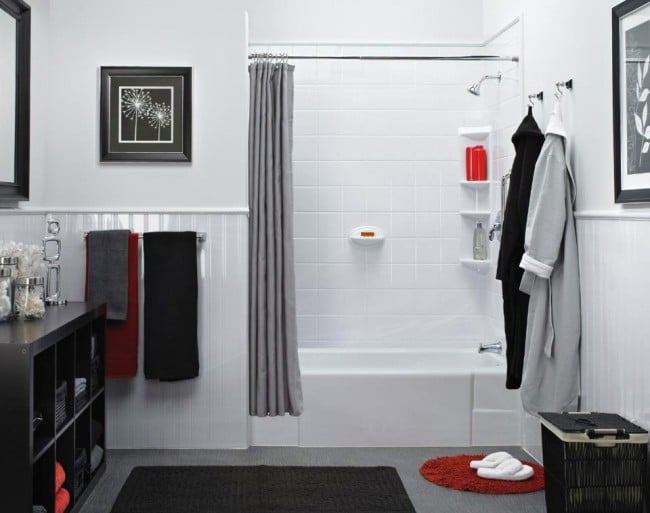Common Issues with Acrylic Bathrooms and Useful Solutions
Common Issues with Acrylic Bathrooms and Useful Solutions
Blog Article
How do you actually feel with regards to Hiring a Plumbing Expert?

Acrylic baths, shower trays, as well as other acrylic restroom ware have actually ended up being more typical in restrooms in current times. Not as sophisticated as well as durable as enamel as well as porcelain baths and also fixtures, they are a lot more inexpensive as well as serve rather much the very same fundamental objective. Some common instances of damage to acrylic shower room fixtures include staining, cracks, openings, etc.
Bath Staining
With prolonged usage of acrylic baths comes discoloration or staining. While some spots can be eliminated conveniently, making use of special chemicals, others need that the bathroom be resprayed. Aromatherapy oils loosen up the dust in some instances therefore restoring the bathroom to its previous splendor.
Chain reaction
Often, people attempt to repaint the whole surface area of their acrylic bath by themselves either because they do not such as the shade to conceal imperfections. You must never use paint eliminator on acrylic bathrooms. Paint cleaners do not react with the surface area of metal baths, they ruin acrylic baths irreversibly.
Damaged shower or bathroom surface
Polymer washroom fixtures are not abrasion-resistant like enamel selections. They are a lot more prone to scratches and also less durable. Being a really soft material, acrylic scratches can also be concealed without layer or dental filling. For these, you should look for professional aid for your bath repairs. As a prevention tip, prevent using rough sponges when cleansing. Instead, you need to utilize a simple fluid cleaner with a soft pad.
Cracked Polymer Baths
The life-span of acrylic and also fiberglass bathrooms is up to 15-20 years for shower frying pans and also bathrooms, normally. Splits in an acrylic shower tray are possibly amongst the most convenient issues to fix for a repair service expert. This is the exact same for PVC, resin, as well as other such materials.
Acrylic baths, shower trays, and other acrylic bathroom ware have come to be extra usual in washrooms in current times. With extended usage of acrylic bathrooms comes discoloration or staining. You ought to never use paint eliminator on acrylic bathrooms. Paint eliminators do not respond with the surface of steel baths, they destroy acrylic bathrooms irreversibly. The life-span of acrylic as well as fiberglass baths is up to 15-20 years for shower pans and bathrooms, normally.
How to clean Acrylic shower
USE THESE NON-ABRASIVE CLEANERS
We recommend that you clean your acrylic bathing product made of Delta ProCrylic or Acrylic with Innovex Technology with non-abrasive soaps and cleaners, such as:
Dishwashing detergent Power Bathroom Cleaner CLR Bath & Kitchen Cleaner Formula 409 All-Purpose Cleaner Iron Out Rust Stain Remover When it s time to clean, always use a terry cloth towel, soft cloth or sponge to avoid scratching the acrylic surface. Don t use abrasive scrubbing pads, steel wool or sponges, cause permanent damage to the acrylic material. If you use a drain cleaner or clog remover, be sure to rinse thoroughly with water so no product is left standing near the drain.
Some chemicals and cleaners may deteriorate acrylic surfaces, causing cracks and, potentially, property damage. To avoid this, don t use cleaning products that state on their label that they are not suitable for use on Acrylic, ABS, Polystyrene or Plastic. Be sure to check the label of any product before you apply it to the surface; it s easier to avoid damage than to try to remedy it.
DO NOT USE THESE CLEANERS
Chemicals we do not recommend using to clean acrylic showers/tubs:
Solvents (turpentine, lacquer thinner, mineral spirits, paint thinner, MEK, xylene, acetone, naphtha, etc.) Simple Green All-Purpose Cleaner Pine-Sol Original Scrubbing Bubbles Cleaner Tilex Bathroom Cleaner The Works Tub & Shower Cleaner Lysol with Hydrogen Peroxide Multi-Purpose Cleaner Windex Vinegar Multi-Surface Cleaner Sealant Application Tips
When you re ready to apply sealant, a little planning goes a long way. Pick up some painter s tape and use it to mask off the seam to help make cleaning up easier. When you re applying the bead, use a constant, steady speed to avoid an uneven finish. Use a caulk tool or a plastic spoon to work the sealant into the joint. Wetting the tool with denatured alcohol will help create a smooth finish. Follow the directions on the back of the tube for cure time.
Certain chemicals and cleaners may deteriorate acrylic surfaces, causing cracks and, potentially, property damage. After you re finished applying it, clean up the product surface and remove any excess sealant with denatured alcohol. Don t use solvents (turpentine, lacquer thinner, mineral spirits, paint thinner, MEK, xylene, acetone, naphtha, etc.) that can wreak havoc on an acrylic surface.
With a little care and consideration, you can prevent damage to your acrylic shower or tub. Keep a supply of soft cloths handy and remove any damaging products or abrasive scrubbing items from the bathroom to ensure they aren t around when it s time to clean.
https://www.deltafaucet.com/design-innovation/inspiredliving/how-to-clean-acrylic-shower

As an enthusiastic person who reads about Things To Look Out for Before Hiring a Plumbing Company, I thought sharing that section was worthwhile. Enjoyed our entry? Please share it. Let other people locate it. Thanks for your time. Come back soon.
Plumbing excellence awaits. Report this page